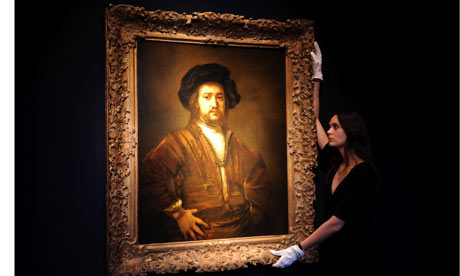Master Paintings Week ( http://www.masterpaintingsweek.co.uk/ ) is entering its twelfth season in London from June 29 to July 6 and the demand for Old Masters couldn’t be higher. Sure the Old Master market isn’t as flashy as the Modern Art market, but it produces a high percentage in the global art market, one whose value has doubled in just two years. An Art Price article discussing the booming Old Master market cites the increasing scarcity of masterpieces in circulation, along with the Chinese market demands for such works as the reason behind this increase.

With such a demand, it is interesting to note that Peter Paul Rubens’ Massacre des innocents, is still the most expensive work by an Old Master in the world, going for $69.7m at Sotheby's London in 2002. To put that in perspective, the artist record for Joan Miró was just broken this past month. His 1927 masterpiece Peinture (Etoile Bleue) sold at a London auction for $36m, almost half of what the Rubens went for. Rembrandt’s Portrait Of A Man, Half-Length, With His Arms Akimbo sold for $36.4m in 2009 at auction, and in 2011 an impression of Adam and Eveby Albrecht Dürer sold for an artist breaking record of $514,787.

In the first round of sales devoted to Old Masters this year, the combined revenue for Christie's and Sotheby's amounted to $85.27m. This is due to the selectivity of the Old Master buyers who not only want an artist they can invest in, but art they can admire.
The Old Masters art market offers tremendous opportunities to buyers (particularly amongst the anonymous signatures and the "circle of" or “attributed to” works). Each of these sales is an opportunity to acquire a work steeped in history for just a few hundred or thousand dollars. There is an intrinsic quality of masterpieces without the fad of the fashionable signature to go along with a rich ownership history that adds to the increasing value of these works and make them a gem to own among the art world. So when considering art as an investment, feel confident thinking outside the modern and contemporary, as it might just be a better return for the money spent.
